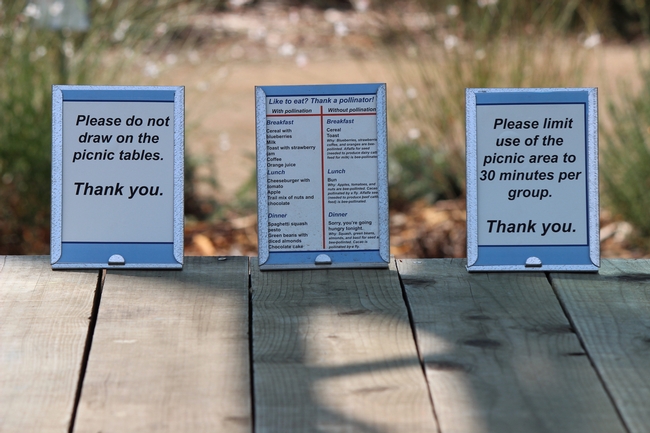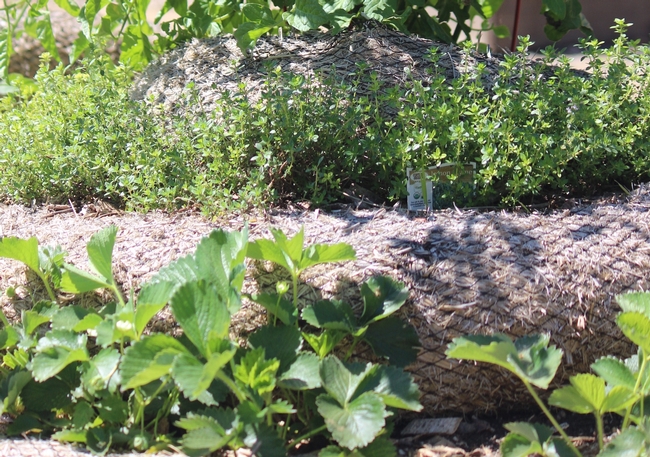- Author: Christine Casey
An important part of the Haven's mission is providing learning opportunities for tomorrow's bee gardeners and bee scientists. Children's activities have always been a part of our open houses; I'm pleased to announce that we now have an area for adults and children to interact to learn more about bees and growing the plants that support them.
Here's a brief tour; I will continue to add new information and educational activities as time permits. I hope you can visit soon!
The area is next to the garden shed and is under shade cloth. There are both adult- and kid-sized tables. A box at the entrance contains an activity sheet for adults and children to use together as they walk in the garden.
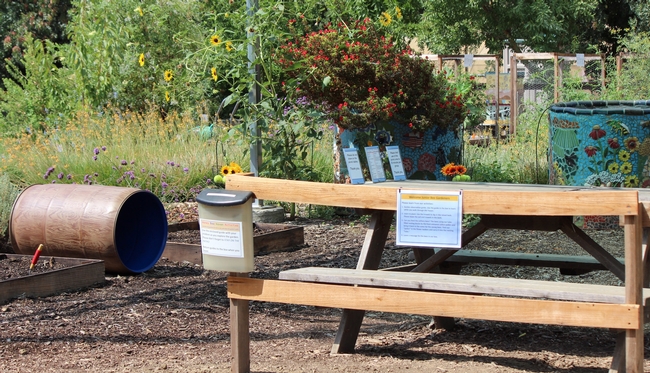
An old hive has been made into a message center:
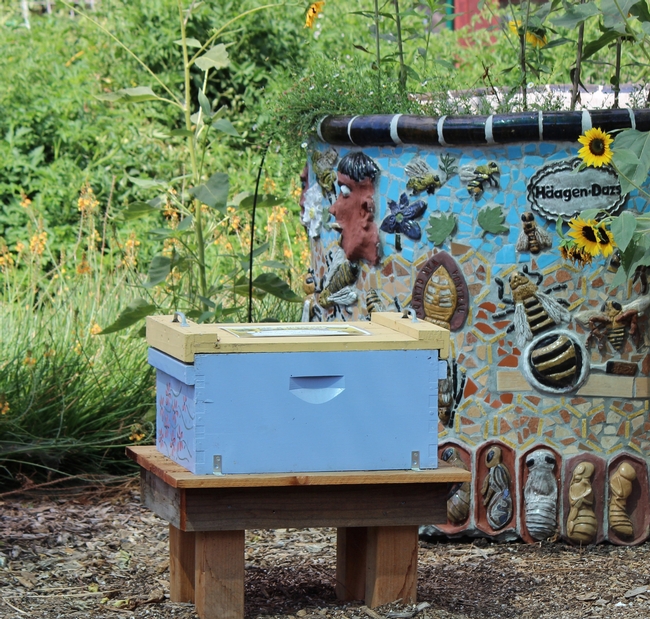
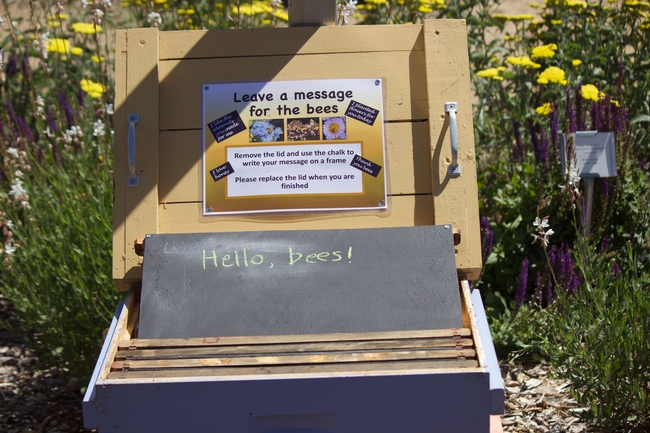
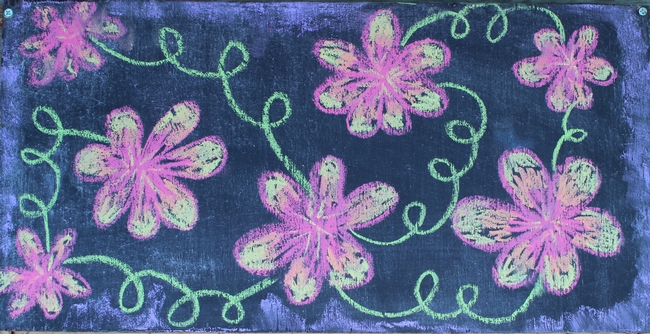
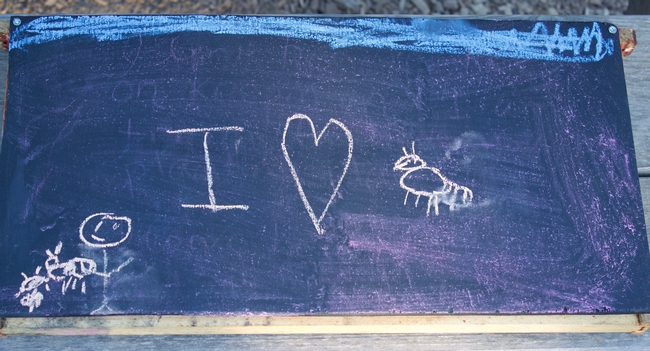
Stop and look at the activity at the solitary bee nesting blocks at the Haven entrance. Kids can then learn how these bees work by collecting "pollen" from "flowers" and depositing it in the "nest." They can also dig in the raised beds to learn how to plant for the bees.
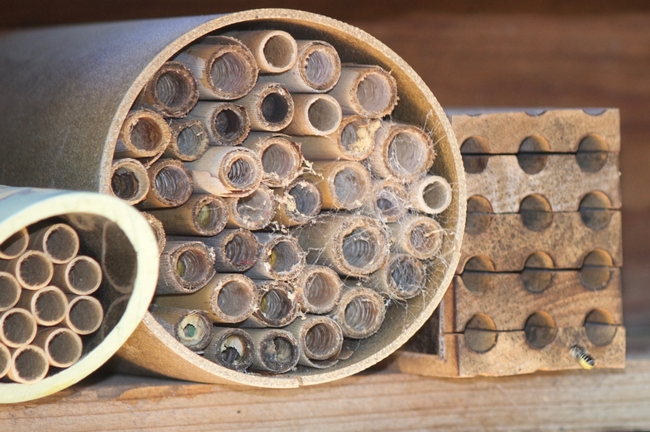
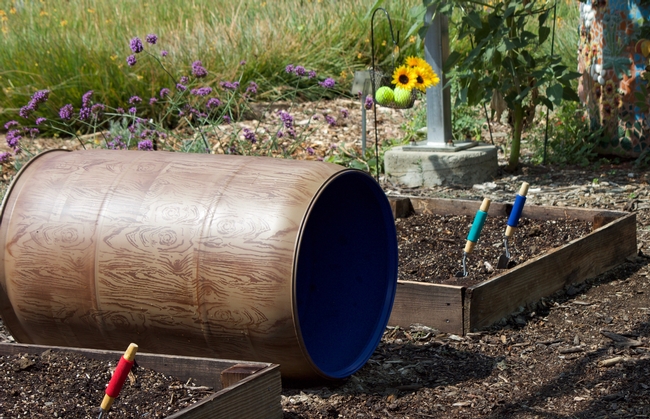
Please be mindful of our policies so that everyone can have an enjoyable visit:
Thanks to Haven volunteers Diane Kelly and Rick Williams, who did much of the construction and painting.
Update as of March 2023: the children's activities have been removed from this area as they were not being well-used by visitors.
- Author: Christine Casey
This Saturday, August 19, 2017, is National Honey Bee Day. This commemoration was created by Pennsylvania beekeepers to recognize the beekeeping industry, honey bees, and the role they play in our food supply. Let's take this opportunity to honor the hard-working honey bees (they pollinate about 85% of bee-pollinated crops in the US, which is worth billions of dollars annually).
To keep honey bees healthy, access to ample, nutritious forage, i.e. flowers, is essential. It's important to provide year-round bloom and to include both pollen and nectar sources. The Haven's web page includes the information you need to develop this in your own garden; click here to go to all of our gardening resources.
Winter-blooming plants:
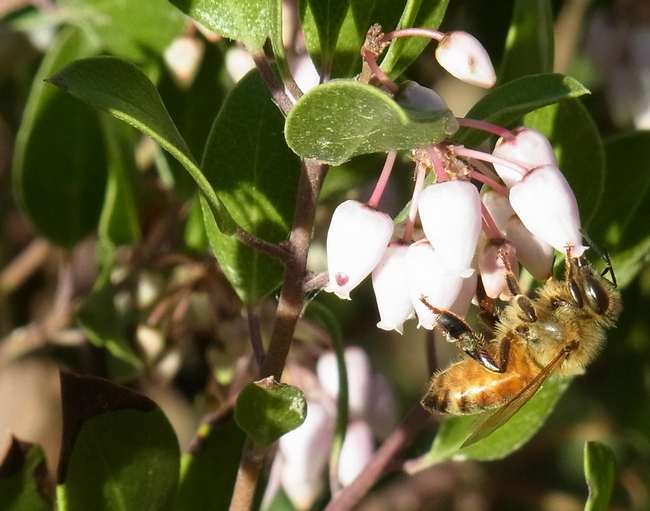
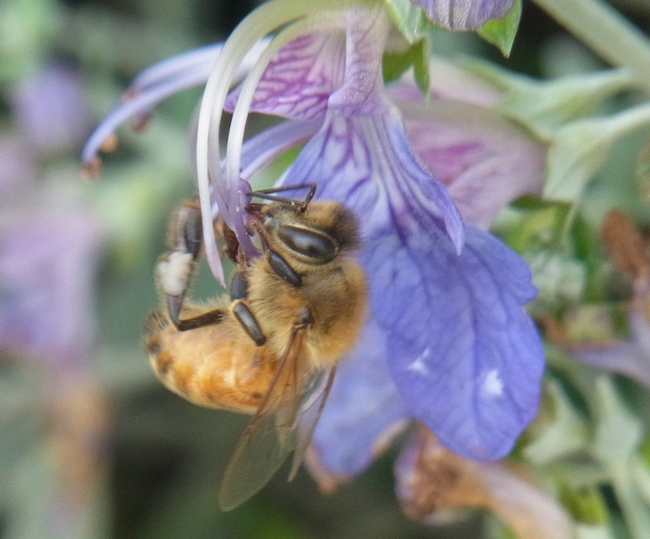
The winter food garden also depends on honey bee pollination:
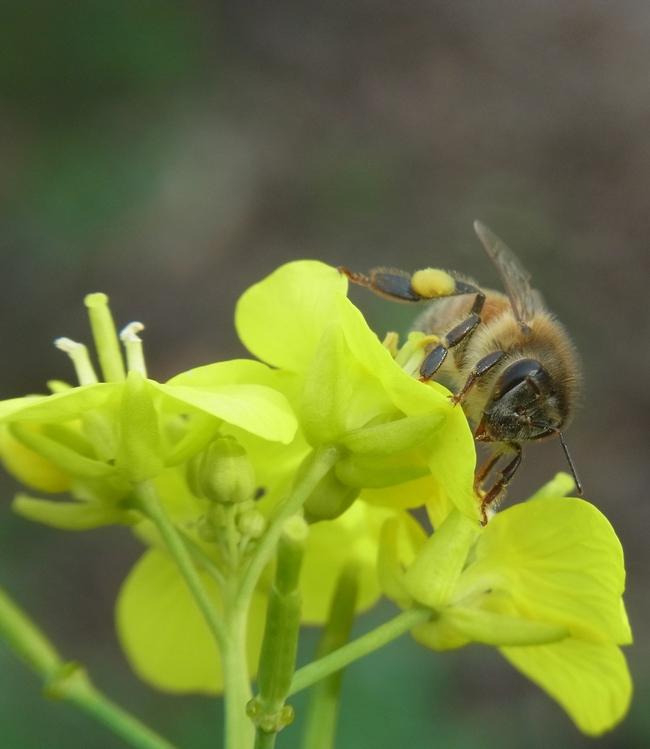
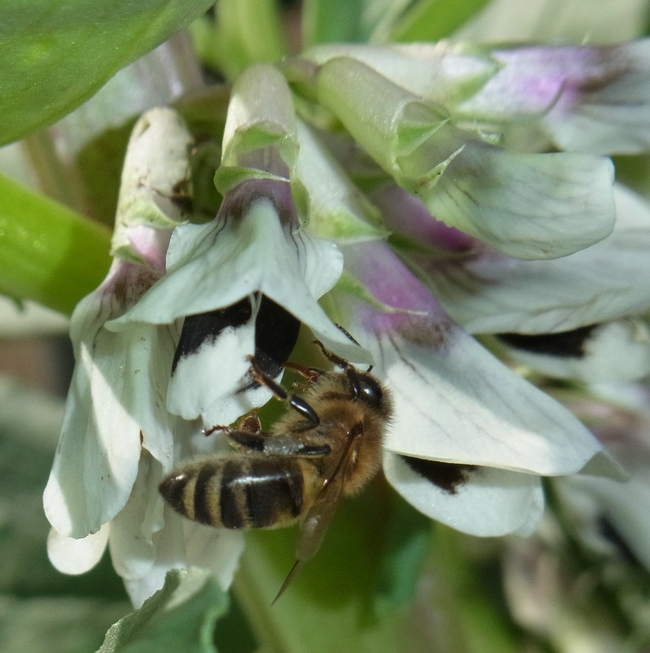
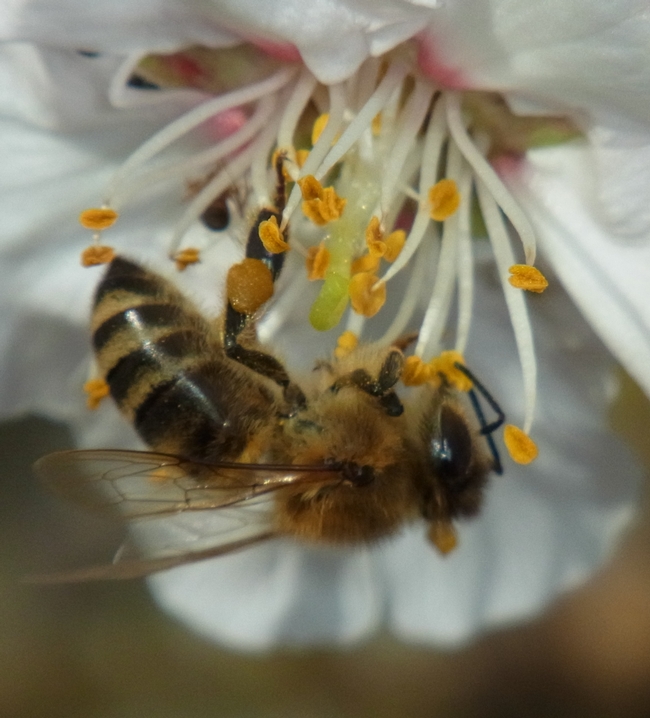
Early spring is when bees have a special need for pollen. This protein-rich plant component is fed to the young bees; an ample supply is important to building a strong colony. Early bloomers like ceanothus and California poppy are good pollen sources; March-blooming Spanish lavender provides a great nectar source that provides energy for spring foraging activity.
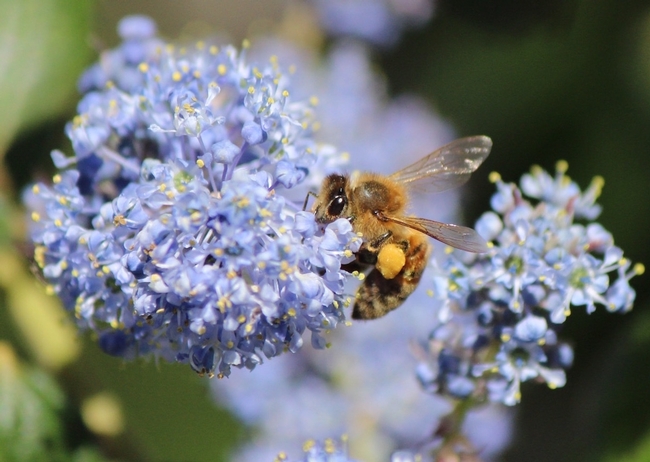
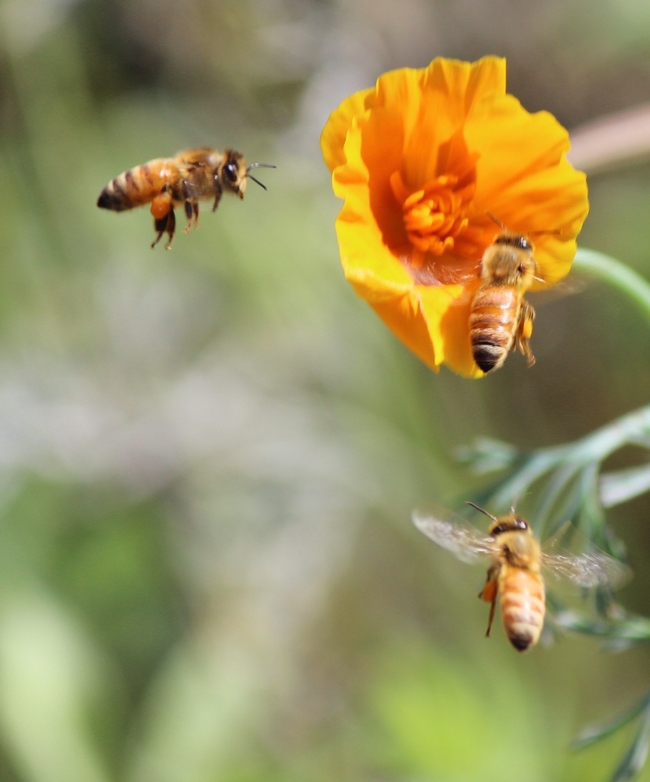
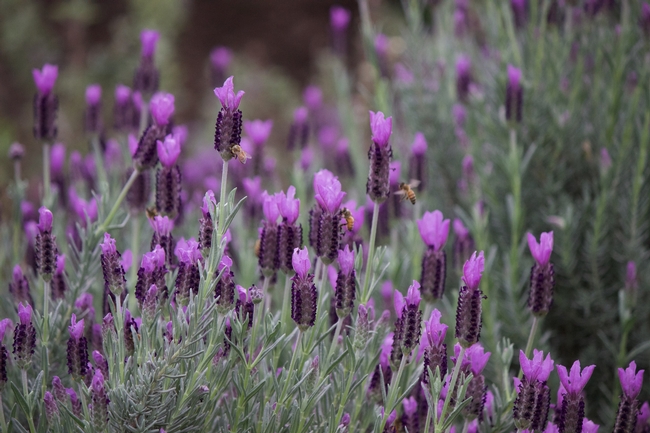
Late spring and into summer are when activity picks up in the bee garden. The hive is growing and there are bees to be fed! Here's a new bee entering the world, along with some of the pollen and nectar sources that will feed her:
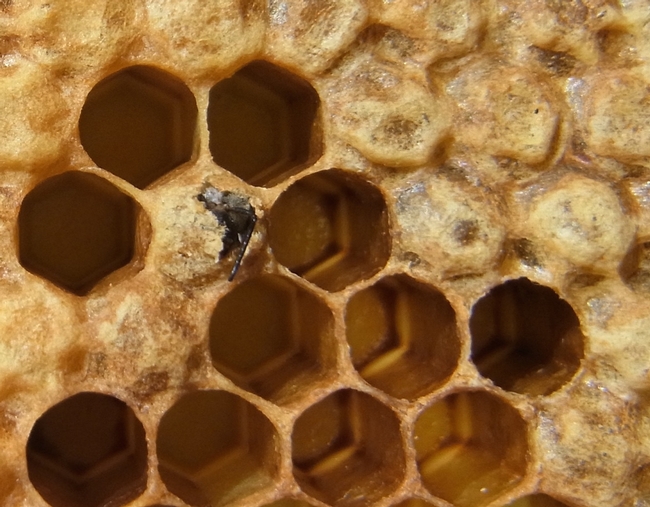
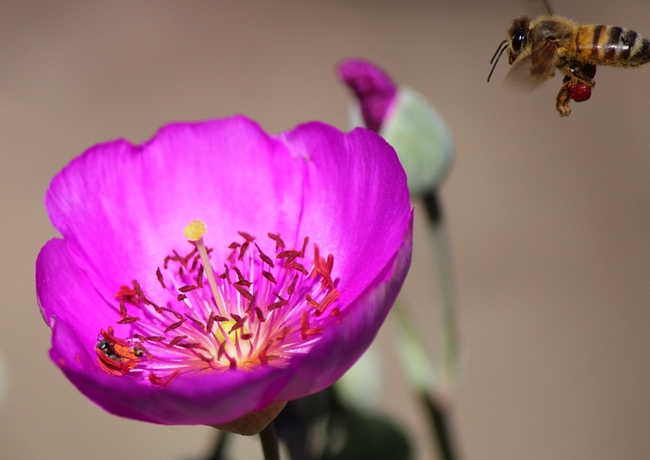
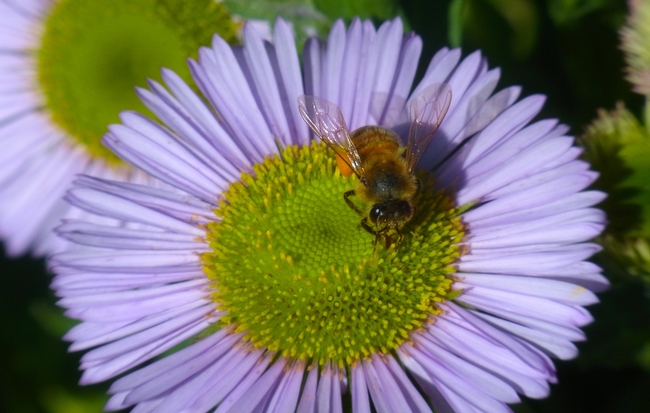
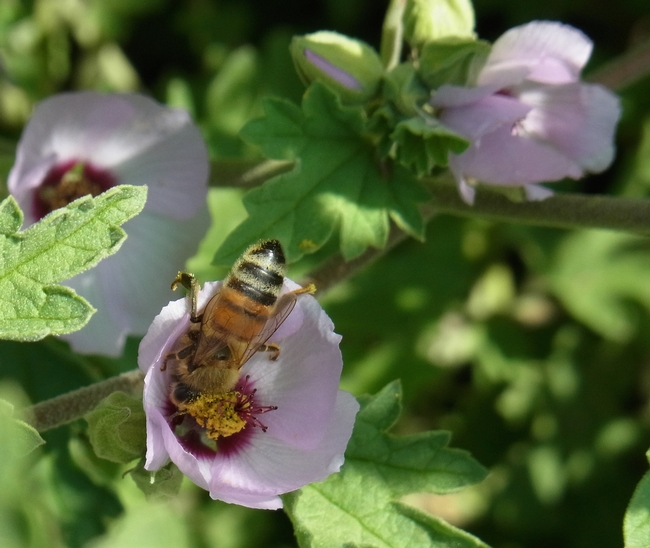
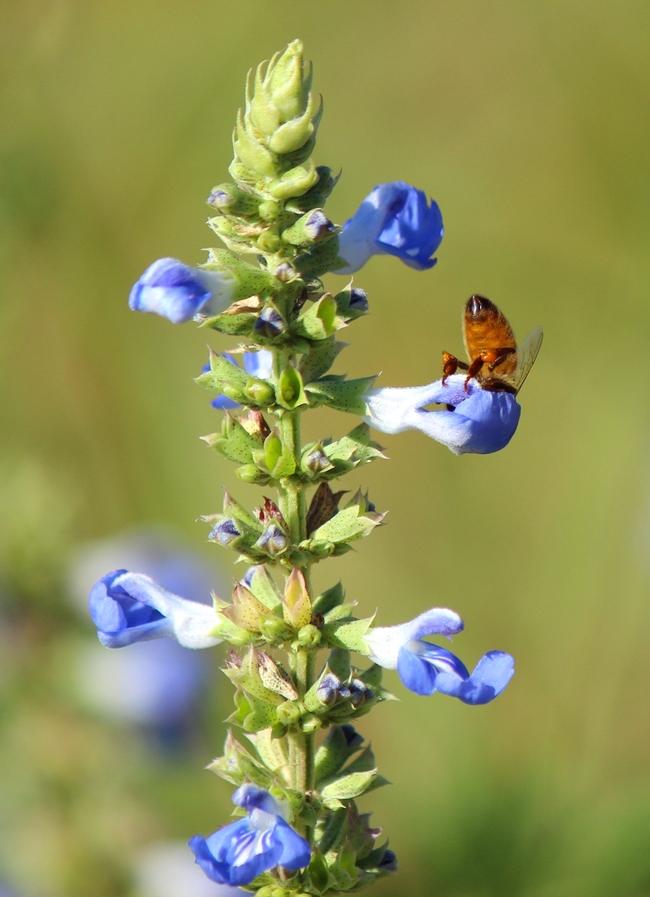
The heat of late summer often leaves gardeners heading for the air-conditioning, but not our bees...here's some plants that love the heat:
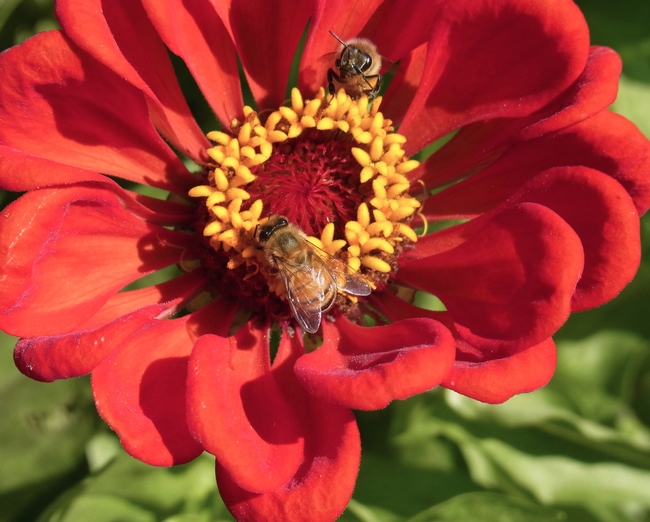
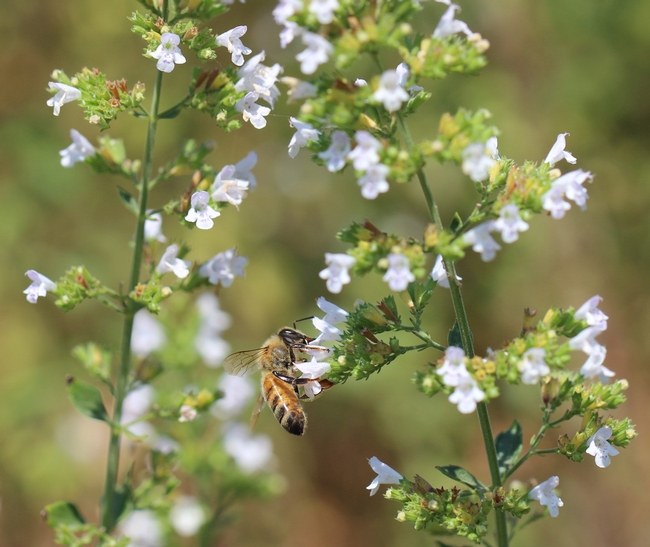
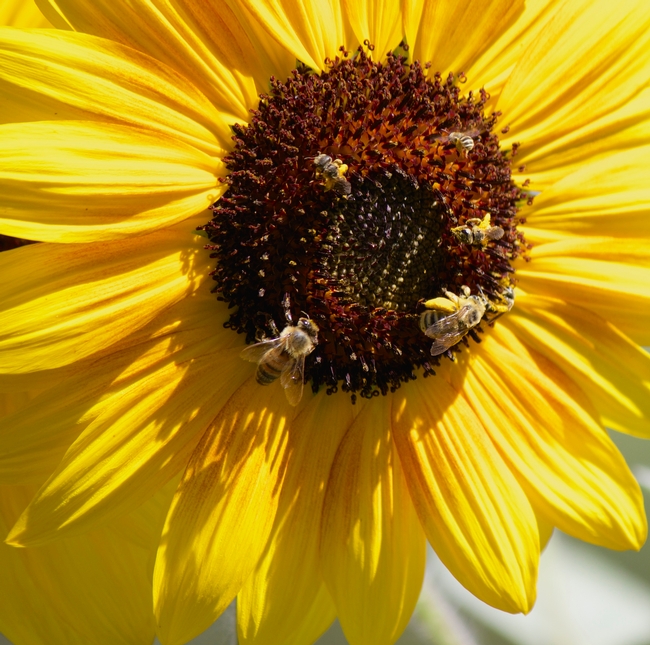
Honey bees need access to water: they don't have AC like we do, but use water to cool the hive. Here's one way to provide a water source:
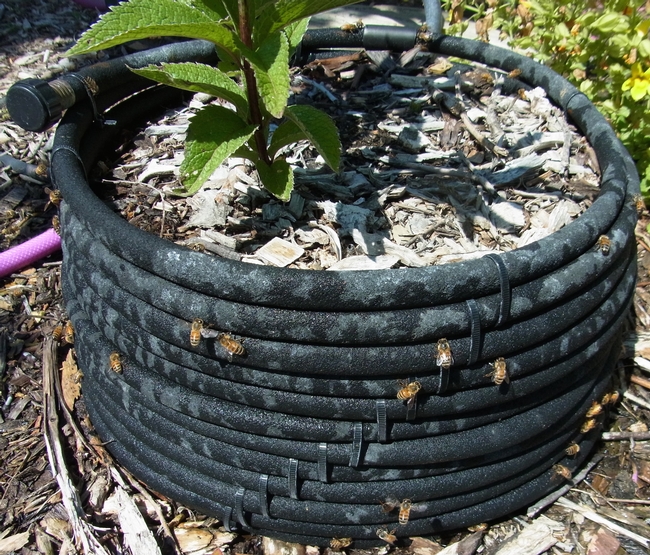
Fall bloomers are important to help honey bees put up enough honey to sustain the hive through the winter. Some good fall bloomers are shown here:
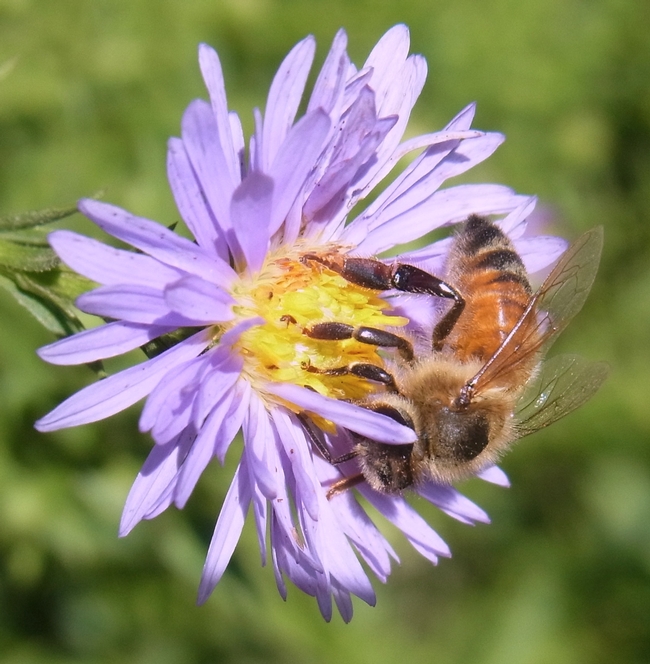
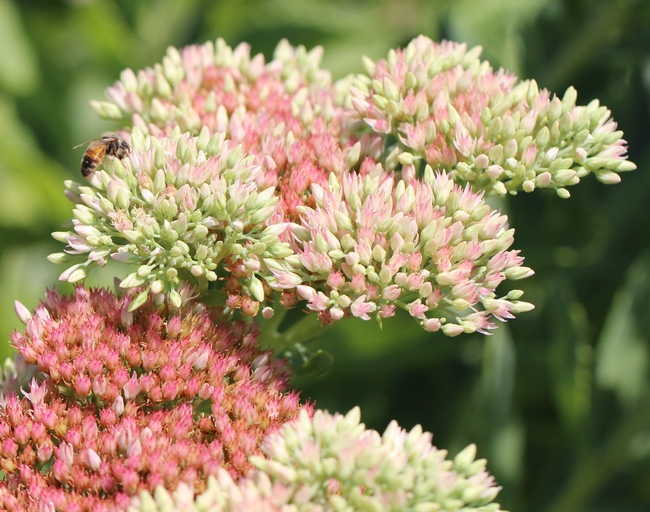
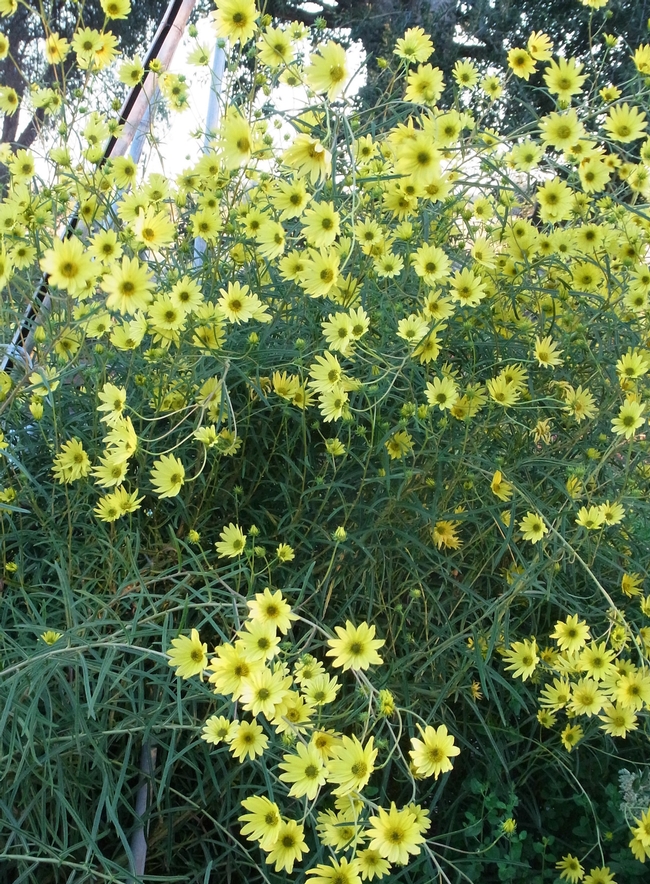
The result of all that hard work....cells being filled with honey, along with full frames of honey that have been capped by the bees for storage in the hive:
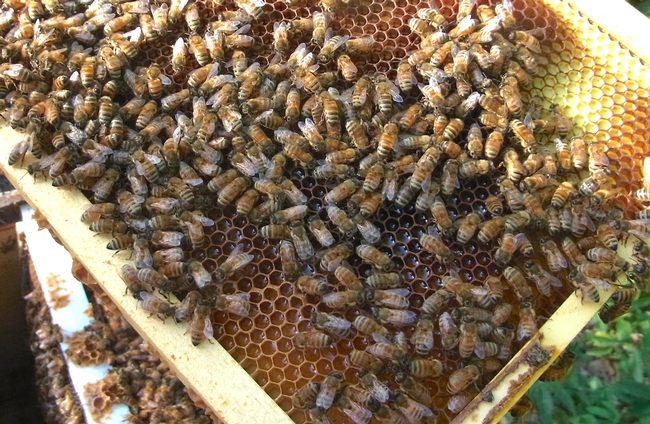
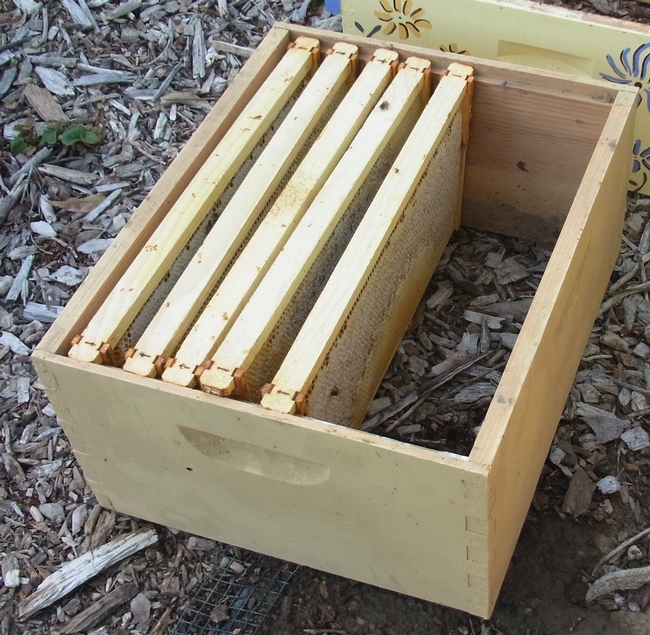
Thanks, bees, for your hard work!
- Author: Christine Casey
Winter crops are finished and our spring plantings are coming along nicely. Here's a wrap-up of what we grew this winter:
Bok choy
You'll find lots of information about this crop in a previous post. As you can see, bok choy remains fresh and ready to harvest even after it has bolted (the term used for cabbage family members that have flowered). Healthy food for us and the bees = win-win!
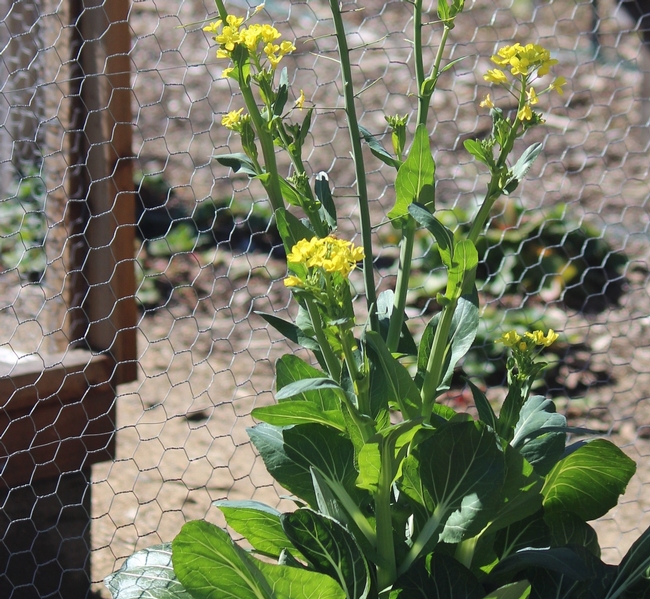
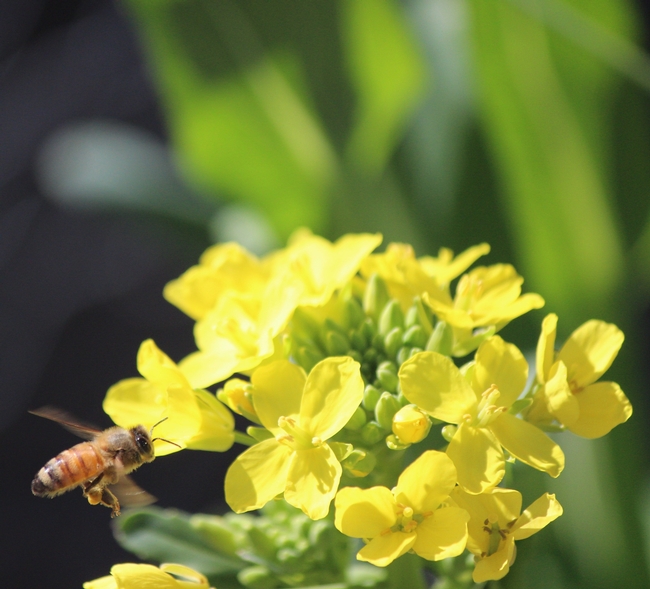
Brussels sprouts
This California specialty crop is delicious sautéed in olive oil with a bit of seasoning. Again, we let ours bolt to provide a nutritious winter pollen source for our bees. Most US production is in California and is concentrated along the coast; the cool, foggy weather there is perfect for this crop. Value in 2015 was nearly $24 million.
Brussels sprouts are high in vitamins C, K, and some B vitamins. Like other cabbage family members, they contain sulforaphane, a compound that may have anti-cancer properties. Steam or stir-fry Brussels sprouts to ensure the highest level of this chemical.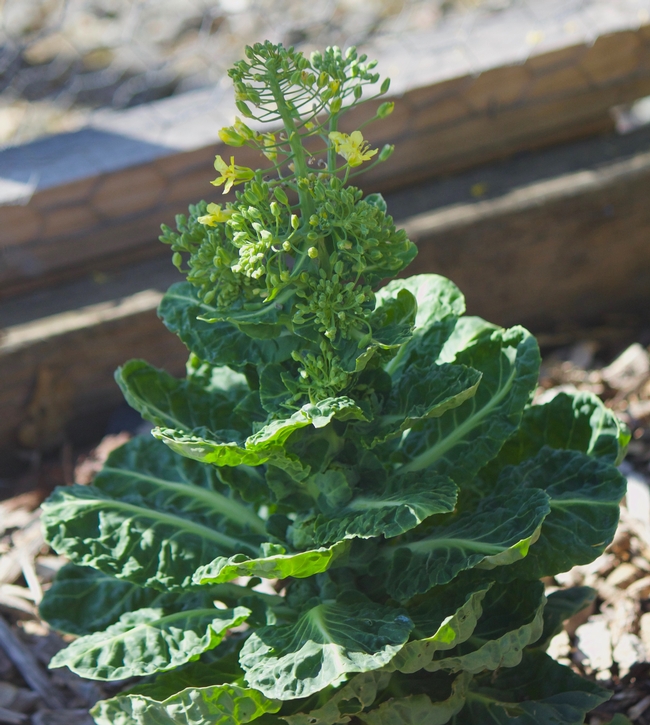
Cauliflower
Several cauliflower varieties are available for purchase at the market or for production by the home gardener. California produces most of the cauliflower consumed in the US, with production along the coast and in the Inland Empire. Crop value in 2015 was $309 million. It is very nutritious: it's a source of vitamin C, vitamin K, folate, pantothenic acid, and vitamin B6.
Here you can see one head ready for harvest and how the part we eat is actually flower buds. By growing a few extras to flower for the bees we can all have a nutritious meal! The purple variety 'Graffiti' gets its color from the plant pigment anthocyanin, which is high in antioxidants.
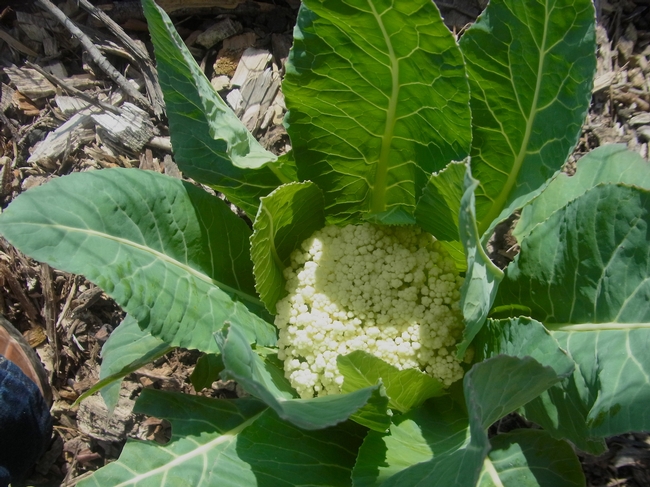
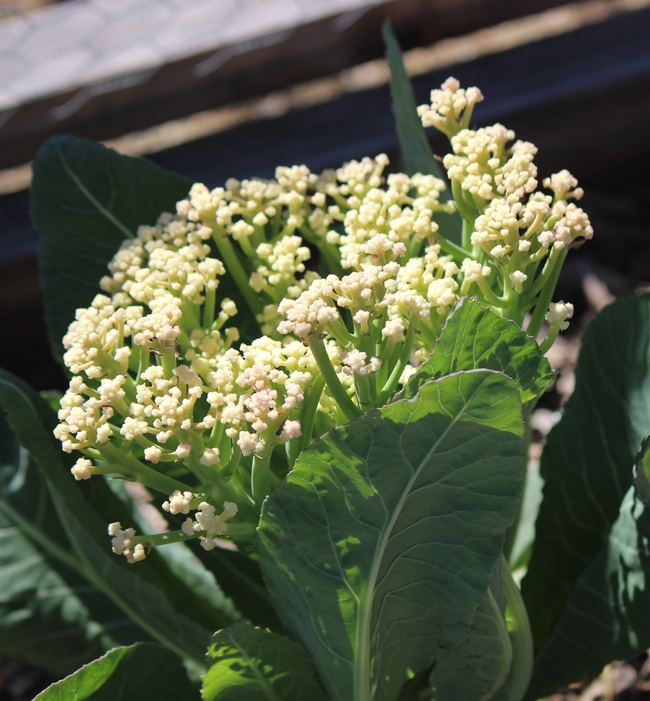
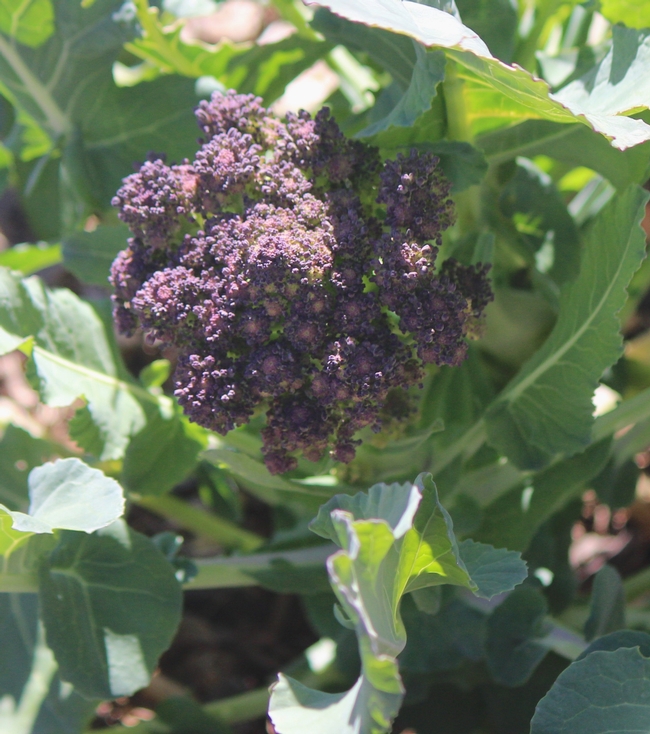
Fava bean
You'll find lots of information about this crop in a previous post. The expanding fava bean pod still has remnants of the flower attached, which shows nicely how pollination of the ovary at the base of the flower leads to development of the produce we harvest.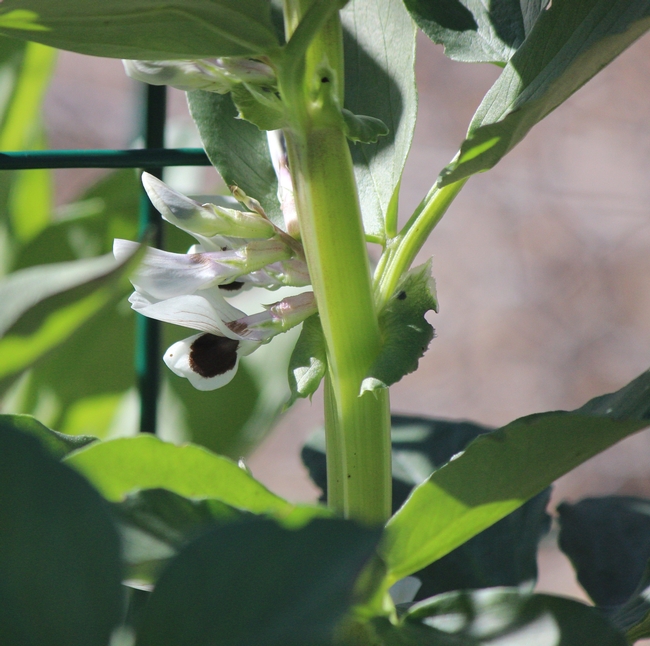
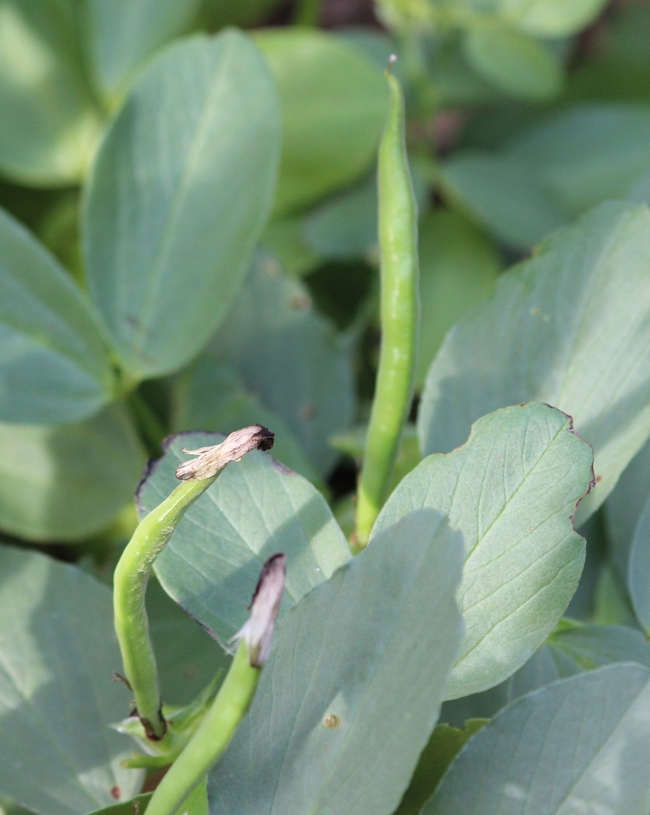
For more recipes, check out this helpful reference guide prepared by the Yolo County Department of Agriculture and funded by the California Department of Food and Agriculture.
- Author: Christine Casey
It wouldn't be spring without strawberries....or the bees that pollinate them!
California's strawberry crop was worth $1.8 billion in 2015; our state produces 88% of the US crop. Tasty and nutritious, they are high in vitamin C, potassium, iron, fiber, and antioxidants.
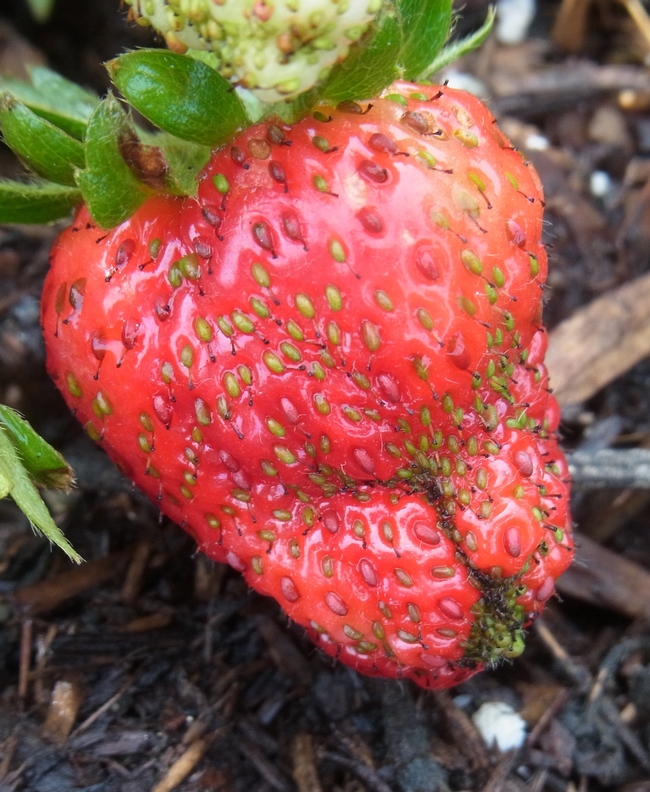
High-quality fruit takes teamwork: honey bees tend to pollinate the top of the flower, while wild bees pollinate the base. Bee pollinators of almonds include mason bees (Osmia spp.), honey bees (Apis mellifera), mining bees (Andrena spp.) and bumble bees (Bombus spp.).
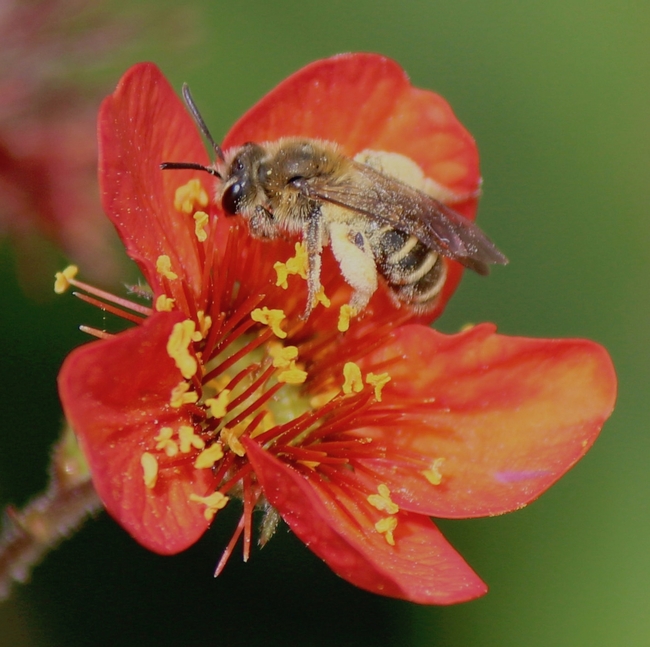
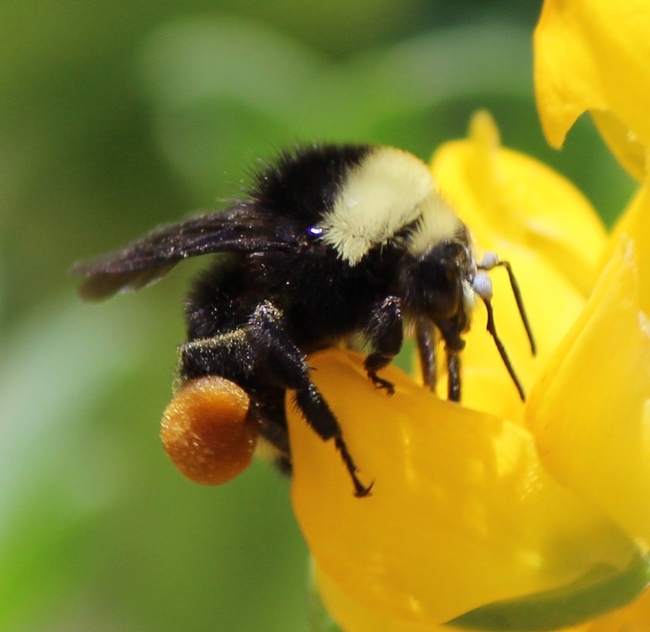
Strawberries are easy to grow at home.....want to improve pollination and yield in your home garden? In one study, planting wildflower strips next to strawberry field increased bee flower visits by 25%. An easy way to achieve this is to interplant strawberries with herbs and let the herbs flower.
- Author: Christine Casey
At the Haven, volunteers make all the difference! We rely extensively on volunteers to maintain the garden, build displays and equipment, and conduct our outreach program. If you are visiting the garden and see one of our volunteers at work, please thank them.
Or if you have the time, how about volunteering yourself? You'll find an application here. Volunteers do routine garden tasks such as mulching, planting, and weeding. Or you may be trained to serve as a tour docent to teach visiting school groups about bees and plants.
We also welcome service clubs and corporate volunteer groups. In the past year, we've hosted volunteers from UCD student service groups Circle K and LOXi, the Mandela Washington Fellowship for Young African Leaders, and corporate teams from PG&E and LexisNexis.
A few of our volunteers at work:
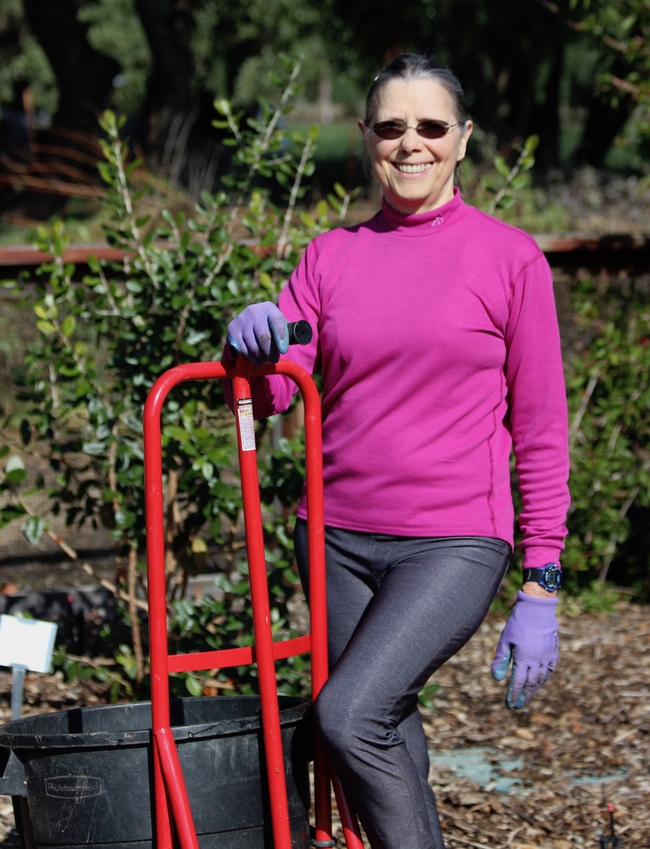
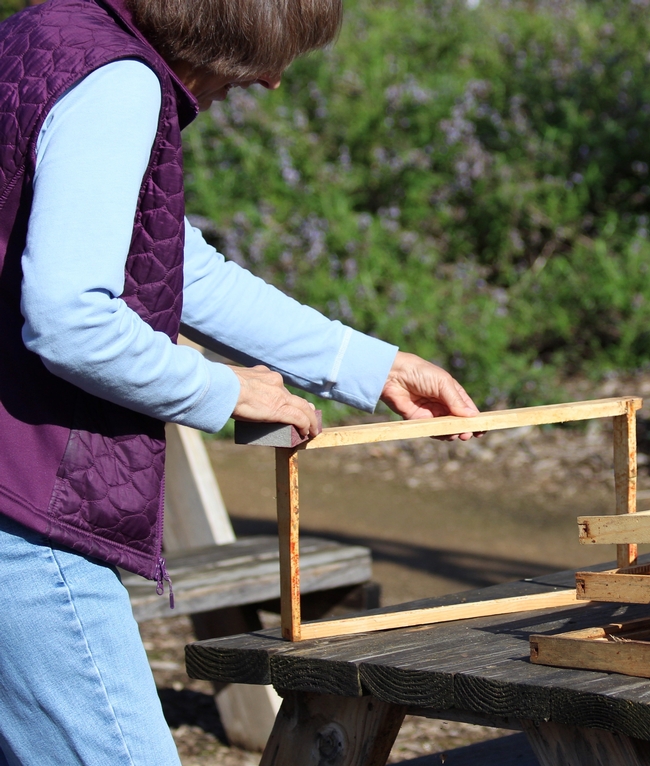
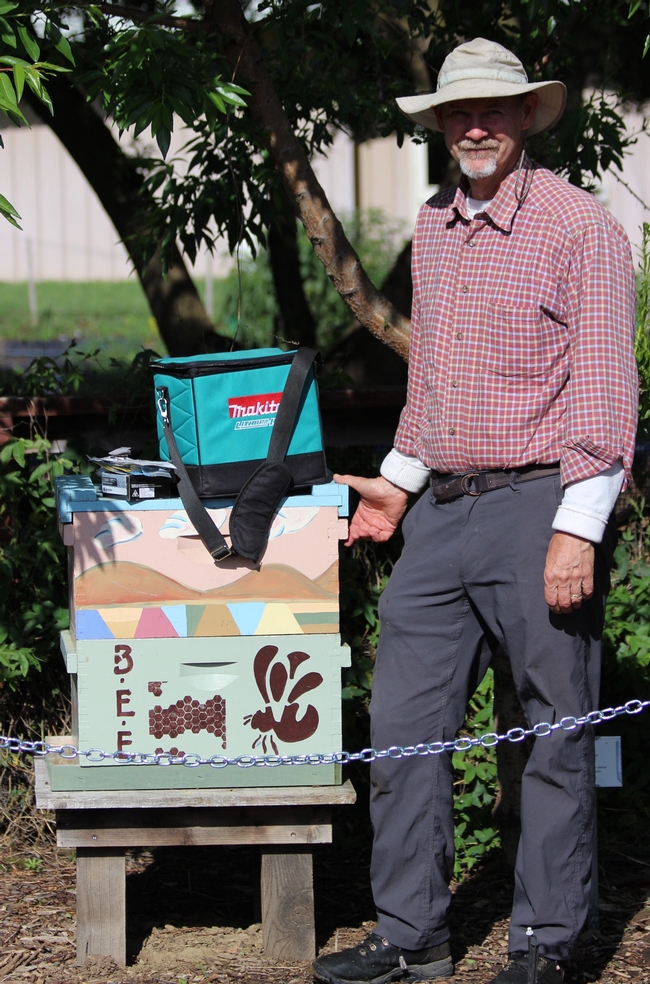
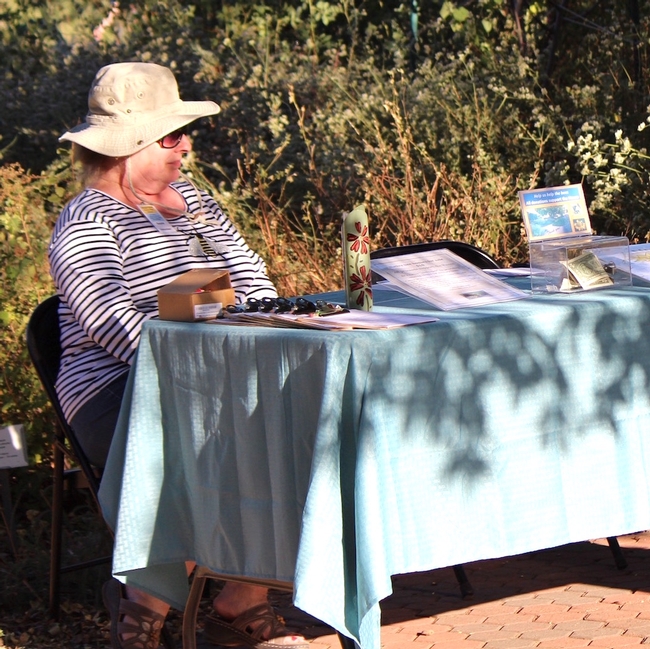
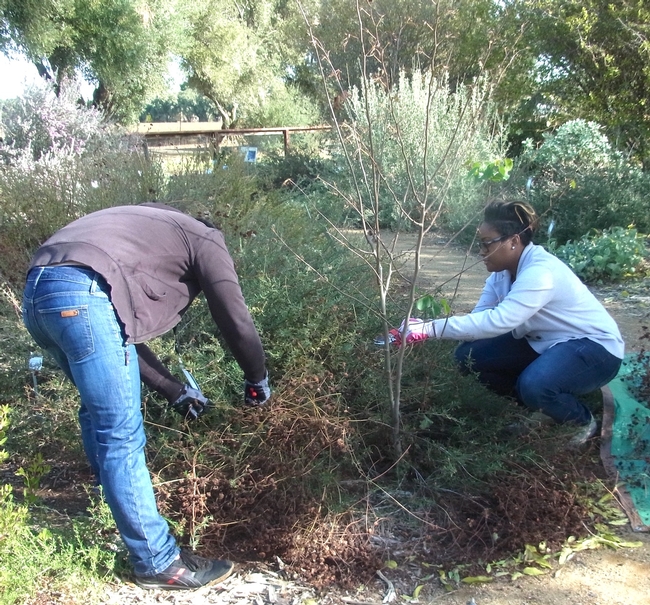
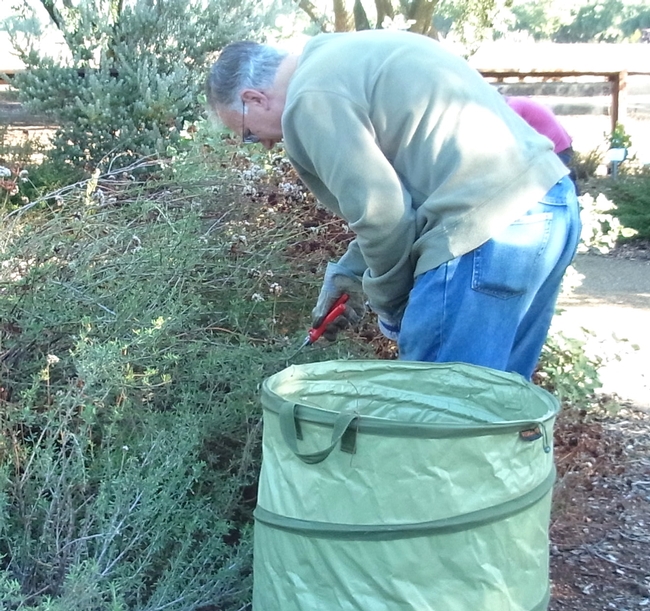
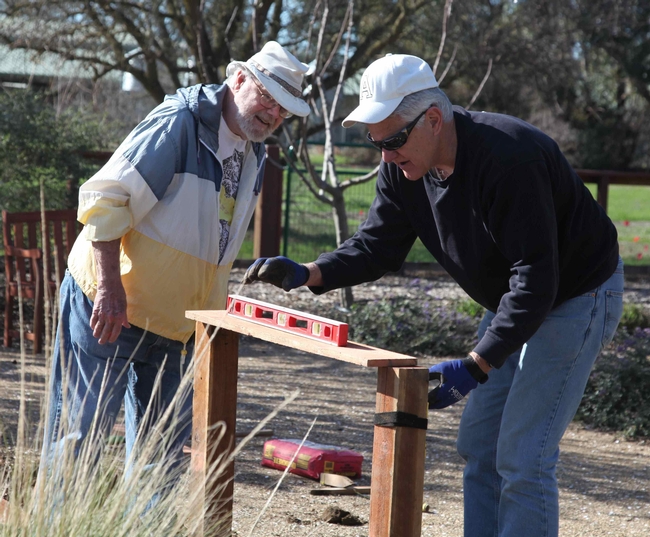
All volunteers during the past year:
Ashley Abrahamson, Tim Adams, Fatima Ademoh, Esteliva Agostinow, Emilia Aguirre, Prosper Ammquandoh, Sheyenne Augenstein, Maame Aulcoh, Michael Baagg, Stephanie Beck, Cristina Blaser, Adele Boadzo, Emily Boch, Landon Bodley, Corina Bogden, Keith Bruni, Ariyanna Cashen, Sabrina Castaneda, Admore Chiumi, Amy Cho, Katherine Craudinier, Justine Do-Huym, Chloe Ffrench, Audrey Foulk, Alexandra Fox, Elizabeth Fundora, Tanoh Ghislain, Alana Goodman, Selena Harrison, Carissa Huang, Daren Hughes, Allen Huynh, James Kakeeto, Diane Kelly, Carolyn Kipsay, Sharon Kirkpatrick, Dysmus Kisiher, Bonny Lew, Stephanie Macey, Iongwa Mashangao, Mizan Massa, Lucretia Mbogba, Tshegofatso Meeuwfan, Megan Mekelburg, Katelyn Mohr, Sarah Mulwe, Dennis Mweudur, Beatrice Ngugi, Lisa Nguyen, Paul Nkumbula, Jennie Norene, Owoeye Olakunle, Kristin Oles, Judy Pam, Valerie Panameno, Erik Sandberg, Shamir Semedo, Bar Shacterman, Andrew Stone, Garrett Tanquay, Robbin Thorp, Carole Tomaszek, Leanna Tran, Daphne Tran, Yves Tuyishime, Betty Warne, Linda Watson-McMurdie, Michael Wells, Lynette Williams, Rick Williams, Guyla Yoak
THANK YOU!


